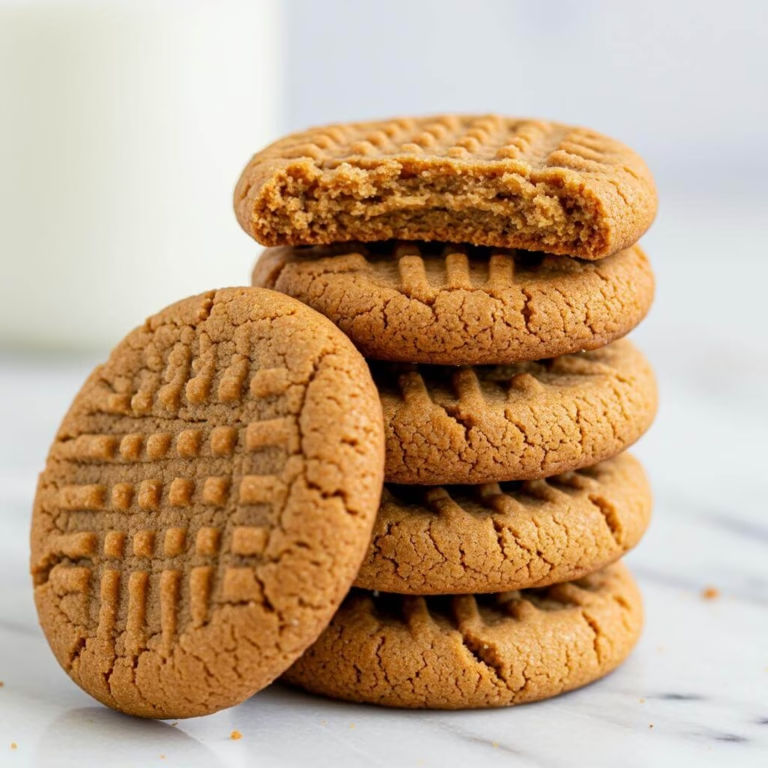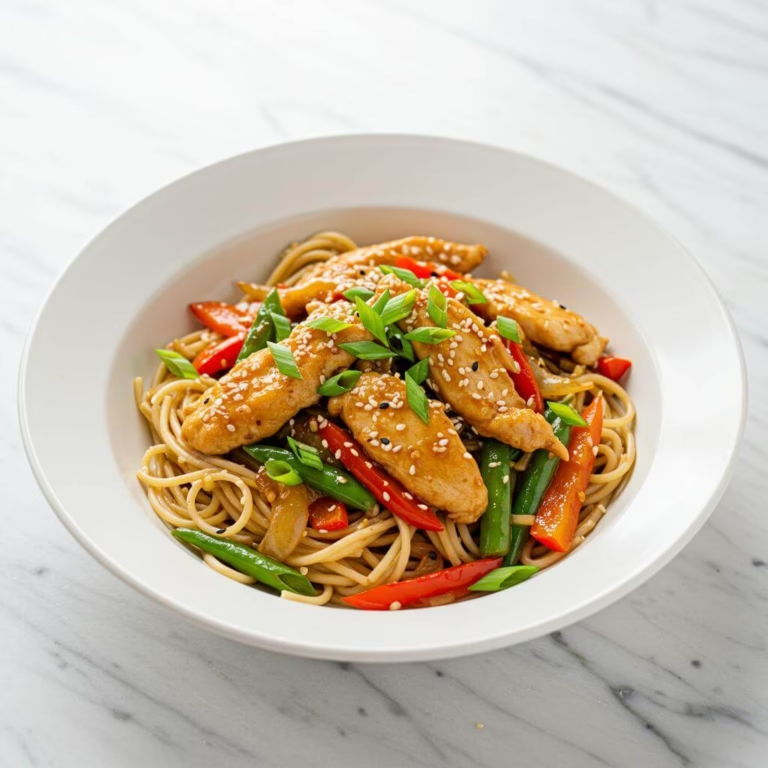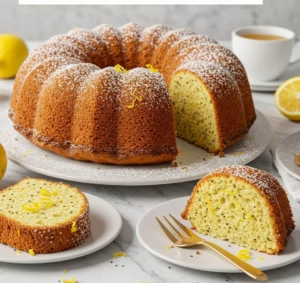
Embrace the Sweetness: Discover Your New Favorite Gluten-Free Easter Desserts
Hey everyone! Can you feel that spring excitement in the air? Easter is just around the corner, and for many of us, that means dreaming of delicious desserts to share with loved ones. If you’re navigating a gluten-free lifestyle, you might be wondering how to whip up some truly show-stopping gluten free Easter desserts without any of the usual stress. Well, wonderful news – you’ve come to the perfect place to find inspiration and recipes that truly work!
Here at Be Gluten Free, we passionately believe that dietary needs should never mean sacrificing flavor, joy, or the delight of a shared celebration, especially during festive occasions like Easter. That’s precisely why we’ve lovingly gathered 12 absolutely irresistible gluten free Easter dessert recipes that are not only surprisingly easy to make but are also guaranteed to delight everyone at your table – whether they’re gluten-free or not! We’re all about making gluten-free living delicious and accessible.
From timeless classics that evoke those warm, nostalgic Easter memories to bright, fresh, spring-infused treats that sing of the season, this collection is your ultimate guide to a sweet and utterly satisfying holiday. We understand that dietary needs can vary, so you’ll find that many of these delightful recipes also come with dairy-free options, ensuring there’s something wonderful for almost everyone to enjoy. We know how important it is to have reliable, go-to recipes that you can trust, much like our reader-favorite Gluten-Free Carrot Cake, which always gets rave reviews. These Easter selections have been crafted with that same dedication to taste and simplicity.
So, let go of any past worries about gluten-free baking; these gluten free Easter desserts are designed for success and enjoyment in your kitchen. Imagine the joy of presenting a beautifully moist cake, a pan of rich lemony bars, or a batch of perfectly chewy cookies, all while knowing they’re completely safe for you and your loved ones, and incredibly tasty too! Whether you’re aiming for an elegant centerpiece to impress your guests, perhaps something as sophisticated as our Gluten-Free Tiramisu, or you’re looking for a crowd-pleasing favorite that you can adapt for any celebration, like our incredibly Easy Fudgy Gluten-Free Brownies, the core principles of joyful, stress-free gluten-free baking shine through. This collection is here to make your baking journey for the holidays both simple and incredibly rewarding. So, tie on your apron, get ready to be inspired, and let’s bake some amazing gluten free Easter desserts that will make this year’s celebration the sweetest one yet!
Why These Gluten-Free Easter Desserts Work Wonders
Embarking on the journey of gluten-free baking, especially for special occasions like Easter, can sometimes feel daunting. Will the cake be dry? Will the cookies crumble? Will the pie crust hold together? What truly sets these particular gluten free easter desserts apart and makes them not just functional but exceptionally delicious and reliable isn’t magic – it’s a thoughtful combination of key ingredients and specific techniques designed to overcome the unique challenges of baking without gluten.
The Power of the Right Flour Blend
The foundation of successful gluten-free baking lies in the flour. Unlike traditional wheat flour, which relies on gluten proteins to provide structure and elasticity when hydrated and mixed, gluten-free baking requires alternative ingredients to replicate these functions. These recipes wisely utilize a high-quality, commercial all-purpose gluten-free flour blend specifically formulated as a cup-for-cup substitute. Why is this crucial? Because these blends typically contain a mix of different flours (like rice flour, potato starch, tapioca starch, etc.) which work together in synergy impossible to achieve with a single type of gluten-free flour. Using a blend ensures a balanced absorption of liquid, prevents excessive grittiness, and lays the groundwork for a tender crumb.
The note about these recipes *not* working with single flours like almond, oat, or coconut flour is a critical insight. These alternative flours behave very differently due to their unique protein, fat, and fiber content. A recipe developed for a balanced all-purpose blend relies on that specific composition. Substituting with a single flour would throw off the delicate balance of the recipe’s structure and moisture, leading to unpredictable and likely disappointing results in your gluten free easter desserts.
The Essential Role of Binders: Enter Xanthan Gum
One of the most significant challenges in gluten-free baking is achieving that cohesive texture that holds baked goods together and prevents them from becoming crumbly. This is where binders like xanthan gum step in, playing a starring role in many successful gluten-free recipes, including these delightful gluten free easter desserts. Xanthan gum is a polysaccharide (a type of carbohydrate) that acts as a powerful thickening and stabilizing agent. When added to gluten-free doughs and batters, it mimics the viscoelastic properties of gluten. It helps trap the gases released by leaveners (like baking powder or baking soda), allowing cakes, cookies, and biscuits to rise properly and hold their shape. Without it, your gluten-free baked goods would likely be dense, flat, and fall apart easily.
The recipe’s emphasis on checking if your chosen flour blend *already* contains xanthan gum is incredibly important! Adding extra xanthan gum to a blend that already has it is one of the most common pitfalls in gluten-free baking. Too much xanthan gum results in a gummy, unpleasant texture – the opposite of the light and fluffy results desired for perfect gluten free easter desserts.
Precision in Measurement: The “Spoon & Level” Secret
It might seem like a small detail, but the recommended “spoon & level” method for measuring gluten-free flour is a game-changer. Gluten-free flour blends, depending on their composition, can be surprisingly prone to compacting. Scooping the measuring cup directly into the flour bag packs the flour down, resulting in significantly *more* flour by weight than the recipe intends. An excess of flour leads to dry, dense, and heavy baked goods. By gently spooning the flour into the measuring cup and then leveling it off with a straight edge, you achieve a more accurate and consistent measurement. This seemingly simple technique is fundamental to ensuring the correct flour-to-liquid ratio, which is paramount for achieving the desired moistness and tender texture in these gluten free easter desserts.
Mastering Moisture and Flavor
Beyond structure, successful gluten-free baking hinges on maintaining adequate moisture. Gluten-free flours can sometimes absorb more liquid or dry out faster than wheat flour. These recipes appear to counteract this through careful formulation, likely incorporating sufficient fats (butter or dairy-free alternatives), sugars, and wet ingredients (like eggs, milk/dairy-free milk, or additions like pineapple in the carrot cake) to ensure the final product is wonderfully moist and tender. The recipes also focus on classic, beloved flavors like lemon, coconut, carrot, and strawberry, proving that going gluten-free for your Easter celebrations doesn’t mean sacrificing taste. The inclusion of dairy-free options for many recipes further enhances their appeal and accessibility, ensuring more families can enjoy these delightful gluten free easter desserts together.
Confidence in Every Bite
Ultimately, these recipes work so well because they are specifically developed with the nuances of gluten-free ingredients in mind. They don’t just remove the gluten; they strategically replace its function using reliable binders and starches within a balanced flour blend. By paying attention to details like the flour type, the presence of xanthan gum, and critical techniques like accurate measuring, you are set up for success. These tried-and-tested gluten free easter desserts offer a roadmap to creating impressive, flavorful, and perfectly textured treats that everyone at your spring gathering can enjoy. Baking gluten-free for Easter is not just possible; with these recipes, it can be a truly joyful and delicious experience!
Transform Your Mornings with 33 FREE Gluten-Free Breakfasts!
Unlock delicious, easy-to-make recipes that will make you excited to start every single day. No more boring breakfasts, just pure flavor and joy!

Get Your FREE Breakfast Ebook Now!
(No credit card required. Instant download.)
Ingredients, Nutritional Information, and Additional Tips for Your Gluten-Free Easter Desserts
Crafting delicious and successful gluten-free easter desserts starts with understanding your ingredients and how they behave. While this post highlights a variety of recipes, here we’ll delve into the common elements and helpful tips applicable across many gluten-free baking projects, especially when preparing delightful treats for your Easter celebration.
Ingredients and Their Role
Since this post covers various *types* of gluten-free easter desserts, a single ingredient list with measurements isn’t applicable to all. Instead, let’s focus on key gluten-free ingredients commonly used and discussed, along with essential considerations:
* **Gluten-Free All-Purpose Flour Blend:** This is the cornerstone of many gluten-free recipes. The recipes mentioned here were developed using Pillsbury gluten-free flour, which is a cup-for-cup blend typically made from rice flour and starches. Using a reliable blend designed for 1:1 substitution makes converting traditional recipes much easier. It provides the structure needed in baked goods without gluten.
* **Starches (like rice starch, potato starch, tapioca starch):** These are often included in gluten-free flour blends. They help to lighten the texture and improve the crumb structure, preventing dense or gummy results.
* **Xanthan Gum:** This is a vital binder in gluten-free baking, mimicking the elasticity and structure typically provided by gluten. It’s often included in pre-mixed gluten-free flour blends. **Important Tip:** Check your flour blend’s ingredients! If xanthan gum is already present, adding extra will likely result in a gummy texture. Only add it if your specific blend requires it. You can find xanthan gum online if needed for a blend that doesn’t contain it.
* **Dairy Ingredients (Milk, Butter):** Many gluten-free dessert recipes utilize standard dairy products. However, options for dairy-free substitutions are often provided, making these recipes accessible to those with dairy sensitivities or allergies.
* **Eggs:** Another common binding agent, eggs contribute structure, richness, and moisture to bakes.
* **Fruits & Flavorings:** Depending on the specific dessert, ingredients like carrots, pineapple, raisins, pecans (for Carrot Cake), lemons and lemon curd (for Lemon Cake/Bars/Cookies), coconut (for Coconut Cream Pie/Macaroons), and strawberries (for Strawberry Shortcakes) provide distinct flavors and textures essential for festive gluten free easter desserts.
**Measuring Gluten-Free Flour:** Proper measurement is critical for success. Use a dry measuring cup (not a liquid one). The “spoon & level” method is recommended: gently spoon the flour into the measuring cup until overflowing, then use the back of a straight knife or leveler to sweep off the excess. Avoid scooping directly from the bag, as this compacts the flour and can lead to using too much, resulting in dry, heavy baked goods. Invest in a good set of dry measuring cups and kitchen levelers for accuracy.
Nutritional Information
While specific calorie or macro counts vary significantly depending on the recipe ingredients and portion size, focusing on gluten-free options for your Easter celebrations offers inherent benefits:
* **Naturally Gluten-Free:** The primary advantage is catering to individuals with Celiac disease or gluten sensitivity, allowing everyone to enjoy delicious gluten free easter desserts safely.
* **Potential for Dietary Modifications:** Many of these recipes offer dairy-free options, broadening accessibility for those with dairy issues. Angel Food Cake is mentioned as naturally dairy-free and low in fat, offering a lighter option among gluten free easter desserts.
* **Varied Nutrient Profiles:** Depending on the base recipe, these desserts can include nutrient contributions from ingredients like:
* Fruits and vegetables (carrots, pineapple, strawberries) providing vitamins, minerals, and fiber.
* Nuts (pecans) offering healthy fats and protein.
* Eggs providing protein and choline.
* Coconut offering healthy fats and fiber.
Choosing homemade gluten free easter desserts also gives you control over the quality and amount of sugar and fats used compared to many store-bought options.
Substitutions & Variations
One of the joys of baking gluten-free, especially for special occasions like Easter, is the flexibility to adapt recipes to various needs and tastes. Here are some common substitutions and variations for these delightful gluten free easter desserts:
* **Dairy-Free:** As highlighted, many recipes include tested dairy-free alternatives. For milk, unsweetened almond milk or coconut milk are excellent choices. For butter, try a reliable dairy-free or vegan buttery spread like Smart Balance or Earth Balance, ensuring it’s suitable for baking. You can find many dairy-free butter alternatives and dairy-free milk substitutes perfect for baking online.
* **Egg Substitutes:** While not explicitly detailed for every recipe here, common egg substitutes like pre-made egg replacers (gluten-free egg replacer), flax eggs (1 tbsp flaxseed meal + 3 tbsp water per egg), or applesauce (1/4 cup per egg, best for moisture-rich bakes like muffins or cakes) can often work in certain dessert types, particularly those that use multiple eggs. Test small batches if making significant changes.
* **Gluten-Free Flour Blends:** While the recipes specify a particular blend, many cup-for-cup blends (like King Arthur Baking Gluten-Free Measure for Measure, Bob’s Red Mill 1-to-1 Baking Flour) can often be substituted. However, results can vary slightly depending on the starch balance and grain composition of the blend. As noted, results are unlikely to be successful with single flours like almond, oat, or coconut flour in these specific recipes, as they require different liquid and fat ratios.
* **Sweeteners:** Granulated sugar is common, but you can sometimes experiment with alternatives like coconut sugar or maple syrup in certain recipes, keeping in mind that liquid sweeteners will affect moisture levels. Adjustments may be needed.
* **Flavor Variations:**
* **Lemon Desserts:** Enhance lemon flavor with extra lemon zest or a layer of homemade or store-bought gluten-free lemon curd between cake layers or on top of bars.
* **Carrot Cake:** Experiment with different additions like chopped walnuts instead of pecans, or vary the spice blend (add a pinch of cloves or cardamom).
* **Coconut Desserts:** For macaroons or coconut cream pie, fold in mini gluten-free chocolate chips or drizzle with melted gluten-free chocolate for extra indulgence. Turn macaroons into festive “nests” for Easter by shaping them and adding gluten-free jelly beans.
* **Shortcakes/Pound Cake:** Serve with different berries (mixed berries, blueberries) or a compote instead of just strawberries. A different syrup or glaze can also alter the flavor profile of the pound cake.
Making gluten free easter desserts is a rewarding experience. Don’t be afraid to try these variations to customize your spread and delight everyone at your Easter gathering, knowing that delicious gluten-free options are entirely possible! “`html
Essential Equipment for This Recipe
To prepare this delicious recipe, you’ll need the following kitchen tools:
- Mixing Bowls – A set of good mixing bowls is crucial for combining ingredients.
Find Mixing Bowls on Amazon - Measuring Cups and Spoons – Accurate measurements are key to baking success.
Find Measuring Cups and Spoons on Amazon - Baking Sheets – For baking cookies, roasting vegetables, and more.
Find Baking Sheets on Amazon - Whisks – Essential for incorporating air into batters and sauces.
Find Whisks on Amazon - Spatulas – Perfect for folding, scraping, and spreading.
Find Spatulas on Amazon - Food Processors – For making purees and chopping vegetables quickly.
Find Food Processors on Amazon - Saucepans – For cooking sauces, soups, and other liquids.
Find Saucepans on Amazon - Chef’s Knives – A versatile knife for chopping, slicing, and dicing.
Find Chef’s Knives on Amazon - Cutting Boards – Protect your countertops while preparing ingredients.
Find Cutting Boards on Amazon
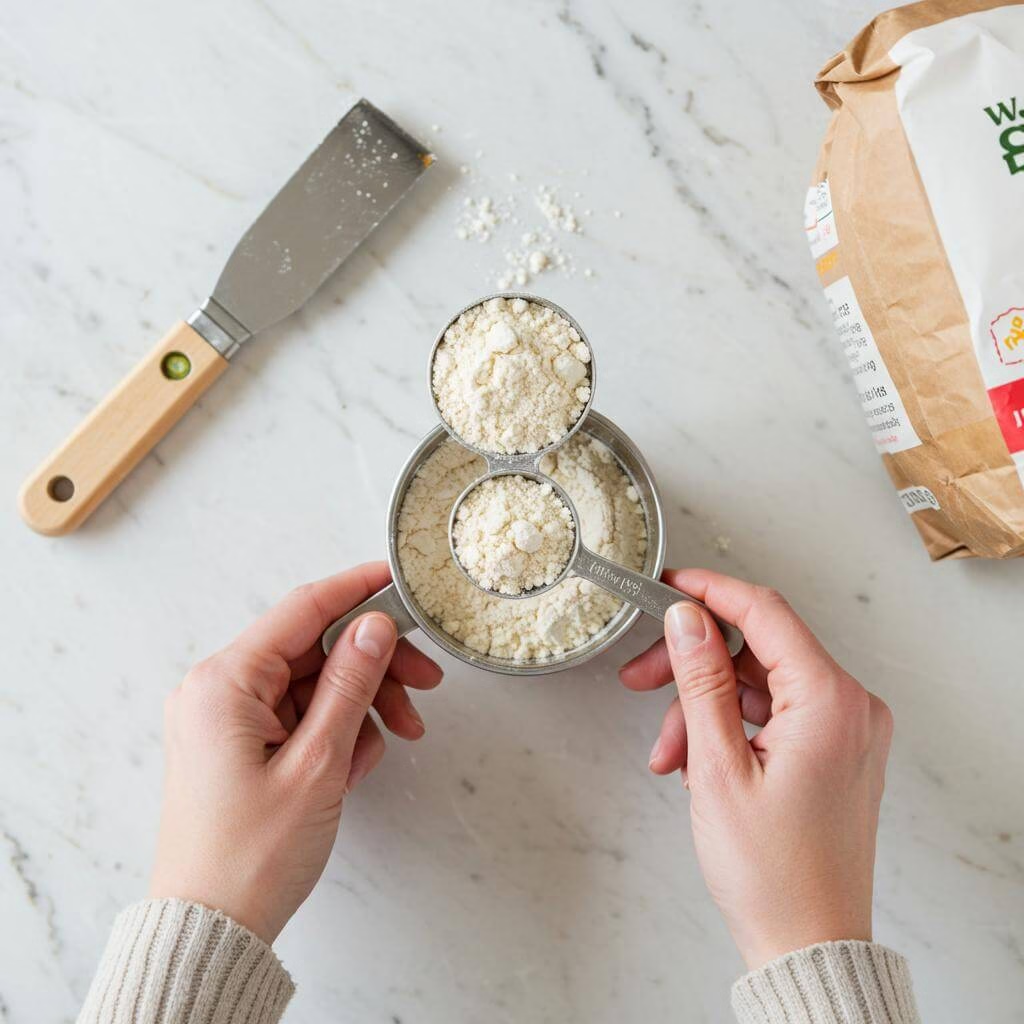
- Carefully select your gluten-free flour blend. For best results with these gluten free easter desserts, a high-quality, cup-for-cup all-purpose gluten-free rice flour blend is recommended. Look for a blend that already contains starches and xanthan gum. Xanthan gum is a crucial ingredient in gluten-free baking as it helps replicate the structure and elasticity that gluten provides. Always check the ingredient list on your flour blend packaging. If xanthan gum is already included, do *not* add any extra unless the specific recipe instructs you to. Adding too much xanthan gum can lead to a gummy or unpleasant texture in your finished baked goods, which is the opposite of what you want for delicious gluten free easter desserts. Please note, these particular recipes are designed for all-purpose blends and will not yield the intended results if you substitute single-ingredient flours like almond flour, oat flour, or coconut flour.
- Measure your gluten-free flour accurately using the “spoon and level” method. This is vital for successful gluten-free baking and ensuring your batter or dough has the correct consistency for these gluten free easter desserts. Start by using a spoon (like a large soup spoon) to lightly scoop the gluten-free flour from its container into your dry measuring cup. Do not pack the flour down. Once the measuring cup is slightly overflowing, use the back of a straight knife or a flat spatula to level off the top, sweeping away any excess flour back into the bag. Make sure you are using measuring cups specifically designed for dry ingredients – like these standard measuring cups – and *never* scoop the flour directly out of the bag with the measuring cup itself. Scooping directly compacts the flour into the cup, resulting in significantly more flour than the recipe calls for, which can lead to dry, dense, or crumbly results, ruining your plans for light and airy gluten free easter desserts.
- Easily adapt many of these gluten free easter desserts to be dairy-free if needed. Most recipes offer simple substitutions that have been tested and work well. For liquid milk, you can substitute with an equal amount of unsweetened almond milk or unsweetened coconut milk (the kind from the carton, not the canned, thick variety). When butter is required, opt for a good quality dairy-free or vegan butter alternative. Look for stick-style dairy-free butter alternatives that are specifically designed for baking, as they tend to perform better and provide a similar richness and texture to traditional butter in your gluten free easter desserts. These simple swaps make enjoying delicious gluten free easter desserts possible for those with dairy sensitivities as well.
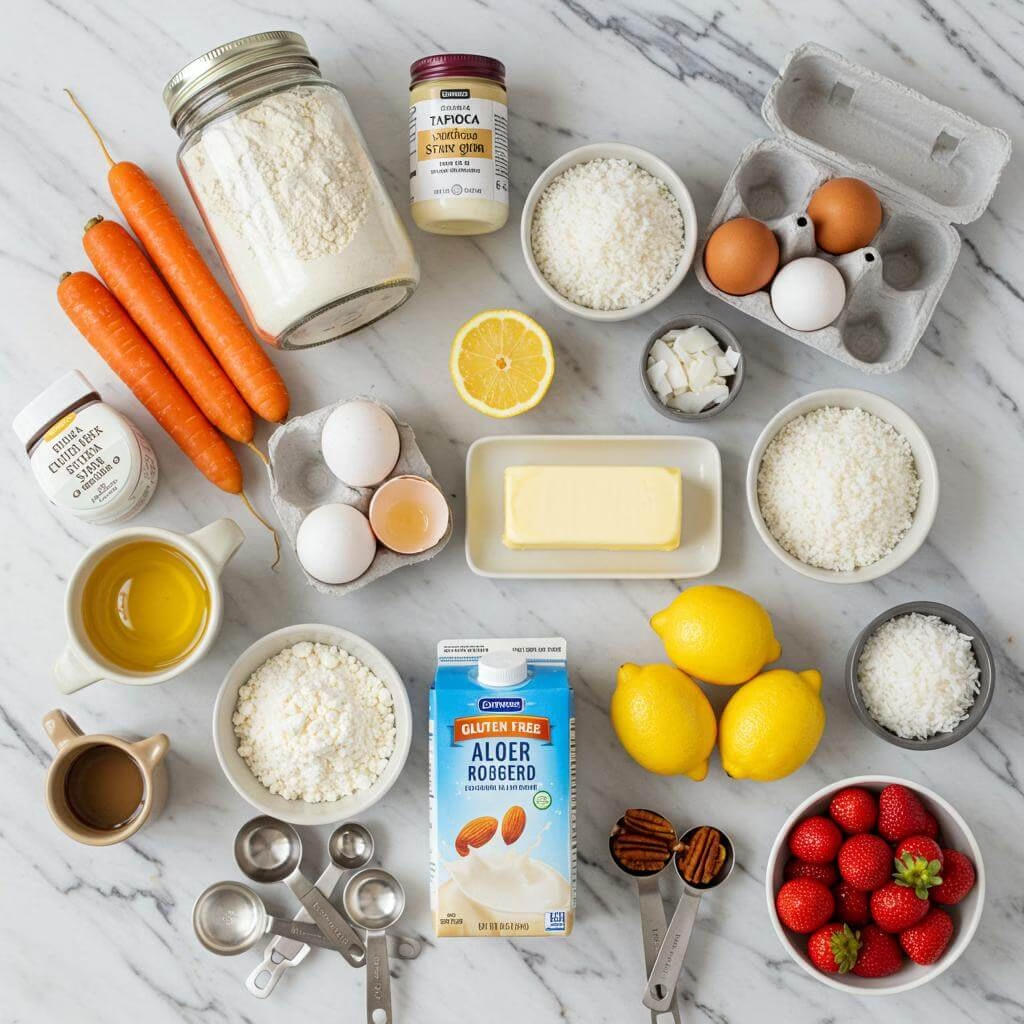
Tips for Perfect Gluten-Free Results
Creating delightful gluten-free easter desserts doesn’t have to be daunting! With a few key techniques and a little patience, you can achieve fantastic results just as delicious as their gluten counterparts. Here are some expert tips to help you master baking these lovely gluten free easter desserts:
- Measure Your Flour Precisely: Gluten-free flour blends behave differently than wheat flour. Always use the “spoon and level” method. Gently spoon the flour into your dry measuring cup and level the top with a straight edge (like the back of a knife). Never scoop directly from the bag, as this compacts the flour and you’ll end up with too much, leading to dry or dense baked goods. This single tip is transformative for successful gluten free easter desserts like cakes and cookies.
- Ensure Ingredients Are At the Right Temperature: For recipes calling for butter, eggs, or dairy/dairy-free milk (many of these gluten free easter desserts do!), having them at room temperature is crucial unless specified otherwise. Room temperature ingredients emulsify better, creating a smoother batter or dough and contributing to a lighter, more even texture in the final product.
- Trust the Recipe’s Flour Blend: The recipes provided here are specifically developed for a cup-for-cup all-purpose gluten-free rice flour blend containing starches and xanthan gum. Substituting a different blend or a single-origin flour (like almond or coconut flour) will drastically alter the outcome. Stick to the recommended type for the best gluten free easter desserts results.
- Don’t Overmix GF Batters/Doughs: While gluten development isn’t an issue, overmixing gluten-free doughs or batters can still lead to tough results. Mix just until ingredients are combined. For cookies and biscuits (like in the strawberry shortcakes), handle the dough minimally.
- Give Doughs a Little Rest: For cookies and some cakes, letting the batter or dough rest for 15-30 minutes before baking allows the starches in the gluten-free flour blend to hydrate fully. This simple step can improve texture, reduce grittiness, and prevent crumbling in your finished gluten free easter desserts.
- Use Parchment Paper or Silicone Mats: Gluten-free baked goods can be more prone to sticking. Lining baking sheets or cake pans with parchment paper or silicone baking mats ensures easy release and perfect edges for your gluten free easter desserts like cookies, cakes, and bars.
- Cool Completely When Directed: Recipes like lemon bars, mini cheesecakes, and even certain cakes benefit greatly from cooling completely, sometimes even chilling. This allows fillings to set properly and textures to firm up, giving you the desired sliceable or firm result for your gluten free easter desserts. Cutting warm bars or cakes often leads to a crumbly mess.
- Consider Oven Temperature Accuracy: An inaccurate oven temperature can ruin gluten-free bakes quickly. Doughs might spread too much, cakes might sink, or cookies might burn before cooking through. Using an oven thermometer is an easy way to ensure your oven is calibrated correctly for consistent results with all your gluten free easter desserts.
Common Gluten-Free Baking Mistakes to Avoid
Even experienced bakers can stumble when going gluten-free. Being aware of these common pitfalls will help you create flawless gluten free easter desserts every time:
- Adding Extra Xanthan Gum (When Not Needed): Many cup-for-cup gluten-free blends already contain xanthan gum or another binder. Adding more when it’s already present is a surefire way to end up with a gummy or rubbery texture. Always check your flour blend’s ingredient list before adding any extra binder specified in a recipe that was potentially developed for a different type of blend. Gummy textures are the last thing you want in your delicate gluten free easter desserts!
- Substituting Different Types of Gluten-Free Flour: As mentioned above, recipes are often developed for specific flour types or blends. Swapping a cup-for-cup blend for a single flour like almond, coconut, or oat flour will fail because these flours absorb liquid differently and lack the necessary starch and binder balance. Stick to the flour type recommended to ensure the structure and texture of these gluten free easter desserts are just right.
- Not Letting Baked Goods Cool Sufficiently: Patience is key! Cutting into a warm cake, pie, or bars before they’ve cooled (or even chilled, as some recipes require) can cause them to fall apart, crumble excessively, or result in a gooey, unset texture. Allowing proper cooling time is essential for the structure to set and for flavors to meld in your gluten free easter desserts.
Frequently Asked Questions
How do I know which gluten-free flour blend to use for these gluten free Easter desserts?
Using the right gluten-free flour blend is key! For these particular recipes, a cup-for-cup all-purpose gluten-free rice flour blend is recommended, like Pillsbury’s, which was used in developing these gluten free Easter desserts. It’s important to choose a blend that already contains starches and xanthan gum, as these help provide structure and elasticity in gluten-free baking. Always check the ingredient list on your flour packaging. Avoid using single-ingredient flours such as almond, oat, or coconut flour, as these recipes are not formulated for them and won’t give you the desired results.
What’s the best way to measure gluten-free flour for consistent results in these gluten free Easter desserts?
Accurate measuring makes a huge difference! The best method for gluten-free flour is the “spoon and level” technique. Use a spoon to lightly scoop the flour into your dry measuring cup, avoiding packing it down. Then, use the straight edge of a knife or a leveler to gently sweep off the excess flour from the top of the cup. Never scoop the measuring cup directly into the flour bag, as this can compact the flour and lead to using too much, which results in dry, dense, or crumbly baked goods that aren’t ideal for lovely gluten free Easter desserts.
I also need to bake dairy-free. Can these gluten free Easter desserts be adapted?
Yes, absolutely! Many of these delicious gluten free Easter desserts have been specifically tested with dairy-free substitutions. If a recipe calls for milk, you can often substitute unsweetened almond milk or unsweetened coconut milk (from the carton) in equal amounts. For butter, look for a high-quality dairy-free or vegan butter alternative that is suitable for baking. Using these tested substitutions makes it easy to enjoy these treats even if you have dairy sensitivities.
My gluten-free flour blend already has xanthan gum listed in the ingredients. Do I need to add more?
No, if your gluten-free flour blend already contains xanthan gum, you should generally not add any extra unless the specific recipe explicitly tells you to. Xanthan gum is a powerful binder, and adding too much when it’s already in your blend can result in finished baked goods that have a gummy or unpleasant texture. Always double-check your flour blend’s ingredients to avoid this common pitfall in gluten-free baking.
What kind of gluten-free Easter desserts are included in this collection besides cakes?
This collection offers a wonderful variety of gluten free Easter desserts beyond just cakes! You’ll find recipes for delightful Gluten-Free Mini Cheesecakes, tangy Gluten-Free Lemon Bars, a creamy Gluten-Free Coconut Cream Pie, easy Gluten-Free Strawberry Shortcakes, and a few different types of cookies including Gluten-Free Easter Cookies, Gluten-Free Coconut Macaroon Cookies (which can be made into cute Easter nests!), and Gluten-Free Sugar Cookies (both no-chill and cut-out options), plus Gluten-Free Lemon Cookies. There’s truly something for every taste!
Are there any options in this collection that are already dairy-free or even vegan?
Yes! The Gluten-Free Angel Food Cake is naturally dairy-free and low in fat, making it a perfect lighter option among the gluten free Easter desserts. Additionally, the Gluten-Free Strawberry Shortcake recipe includes a dairy-free and vegan option, offering even more flexibility for different dietary needs while still enjoying a classic spring dessert.



